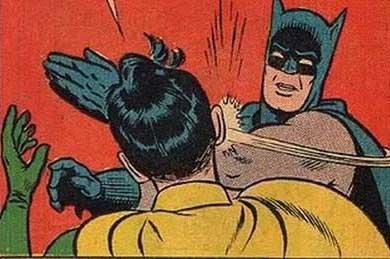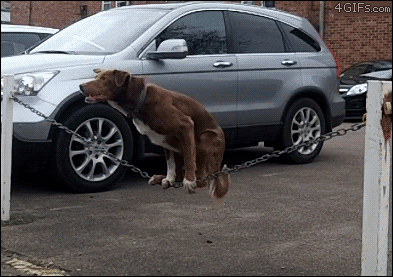1) Have you heard about using isometrics to decrease pain associated with tendinopathies? I was unfamiliar with this concept so I thought I’d send out a tweet to one of the leading experts, Jill Cook. She gave some great advice that you can immediately use in your practice. Jill’s guidelines:
• Joint Angle = Inner Range Holds
• Duration = Long Holds (up to 45 sec)
• Intensity = Heavy as Possible (no perturbation)
• Frequency = 2-3x/day
• Keep in mind it will vary for each person
2) A great article summarizing how to improve Crossfit training. It’s really just a good article on programming and layering movements (not just for Crossfitters).
3) The Schroth Method seems to be gaining some popularity. I’ve even had a couple patients ask me about it. It looks like it has very similar methods to the Postural Restoration Institute (PRI). #Scoliosis
4) Great read on diet and the human microbiome from Eirik Garnas.
5) Adriaan Louw is my favorite pain science guy. Here are 3 articles with some great Adriaanisms: Zac Cupples Course Review, 11 Questions with Louw, Therapeutic Neuroscience Education
6) Ever wonder about that focal loss of hair on your patients legs? Gait Guys explain it here. “Hair growth is influenced by local blood flow and “tropic” influences from the autonomic nervous system and sensory feedback loops, supplied to the area segmentally (ie. by each spinal level). “
7) The hip hinge is one of my favorite exercises for both myself and my patients. Seth Oberst goes over it nicely in this post. Great cue – “Giving at the knees, taking at the hips.”
8) Sleep for improved motor patterns – “Neurons that fired during learning fired again during subsequent slow-wave sleep”
9) Isometrics decrease the blood supply to the muscle, thus making it a great anaerobic exercise. From a neuro perspective, it increases the neural drive. These two benefits alone make it worthwhile for your training program or your patients rehab.
10) In rehab and fitness, the pendulum eventually swings the other way. Kathy Dooley explains how the popular knees out cue can be the wrong cue for your patient. Don’t sacrifice tripod foot for proximal alignment.
11) The unathletic population can sometimes have difficulty performing MDT shoulder resets. Here are 3 variations to help troubleshoot this problem.
12) 3 Factors for Skill Development from GMB: Adaptability, Prioritization and Cycling, Mindful Practice
13) “A big grip tells the brain that the position is a stable one and it is safe to generate a lot more force without risk of destabilization and injury.” Great post from Seth on the importance of grip strength and the nervou system. Here’s another article on grip strength I wrote a couple months ago for Physiospot.
14) Tom Myers has a great answer to a question on fascial lengthening direction. “Since what we want to do in a locked-short muscle is break / melt the bonds between these angled fibers to allow the myofascial unit to lengthen, we run along the tissue in the same direction as the muscle fibers, presumably unwinding some of the muscle tension, presumably hitting some trigger points along the way, but absolutely melting the hydrogen bonds that run in that direction and keep the tissue from lengthening.”
15) I’ve really enjoyed Sue Falsone’s blog so far. She’s got a great perspective. Here’s one on the different approaches she uses – “How do we blend concepts without “drinking the Kool-Aid” of any one philosophy or teaching?”
16) Chris Johnson introduced me to the power of expectations and placebo with this article. It’s important to be aware of this aspect of treatment and to know how to use it to improve outcomes. Here’s another article on the placebo effect and how it can be a good thing.
17) “It doesn’t matter how much force you can generate with your extremities if your trunk is not strong enough to oppose and transmit it; and it doesn’t matter how rigid you can make your core if the contraction is not timed properly based on the specific movement demand.” Nice article on half-kneeling from Quinn Henoch.
18) Foundational Strength Course Review – The first FMS/StrongFirst course taught by Gray Cook & Brett Jones
19) “Any time we make a rapid change, that change is neurophysiologic, not mechanical” –Erson Religioso
20) I created this image to simplify the forces associated with the deep squat. It seemed to get a lot of attention on twitter this month.
21) “We should recognize that in some cases, one of the quickest and easiest ways to change motor control is to change the structure of the body which we are trying to control.” –Todd Hargrove on how structure affects function. Great example using the stepping behavior during infant development.
22) “Hip socket depth, which is an anatomical variant that can’t be stretched, trained, or undone without surgery, is one of the main biomechanical influencers in how low you can go into a squat before you essentially run out of range of motion and have to find it elsewhere” Great article on hip joint morphology and it’s association with the deep squat by Dean Somerset.
23) Mike Robertson has the most thorough exercise tutorials. Here’s his new one on the push-up (and variations).
24) “Neutrality is not a point on a map. It’s a parasympathetic state of being.” – James Anderson (via Zac Cupples)
25) David Butler has been stirring the pot lately. He wrote a post on cancer and whiplash here. Then Alan Taylor wrote a rebuttal. It’s kind of an angry response, but he has some good points. Overall I think we should spend less time trying to nullify other approaches and more time trying to share positive knowledge to improve our patient care.
26) 3 Reasons Why You Should Focus on Breathing
27) Why kids fidget, the ADHD problem, the cause, and a solution – a must read for the future of our species. “In order for children to learn, they need to be able to pay attention. In order to pay attention, we need to let them move.”
28) Great interview with the Seahawks PT, Michael Tankovich. Some gems: “Movement screening is a daily process.”, “The basic premise is that throughout the rehabilitation process, the tension levels applied to the injury site must progressively increase until they reach competition level intensity.”, “The first step to improving recovery is to develop a culture of knowledge.”
29) Are broken bones stronger after they heal? Answer is here.
30) Tommy John surgery has been getting a ton of publicity this year. Chris Butler put together a nice collection of articles to catch up on why.
31) People You Should Know – Vladimir Janda is one of the most influential movement specialists of all time. However, he is much more than simply the guy that founded the Upper & Lower Crossed Syndrome. “He was one of the first physicians to combine therapy and medicine in a ‘hands-on’ approach, becoming one of the earliest to practice physical medicine and rehabilitation.” In a time where everyone was focused on isolated strengthening and passive joint structures, Janda developed “Sensorimotor Training” and focused on balance and function.
32) Top 3 Tweets of the Month
- Pete Friesen @petef08 – If you don’t like the output, then change the input.
- Danny Matta @dannymattapt – The art of #coaching is picking the right cue for the right person. Reps are the only way to improve this. #CrossFit
- Seth Oberst @SethOberstDPT – Position is stability. Position is power. Position is function. Position is everything
33) Canine Sensorimotor Training




